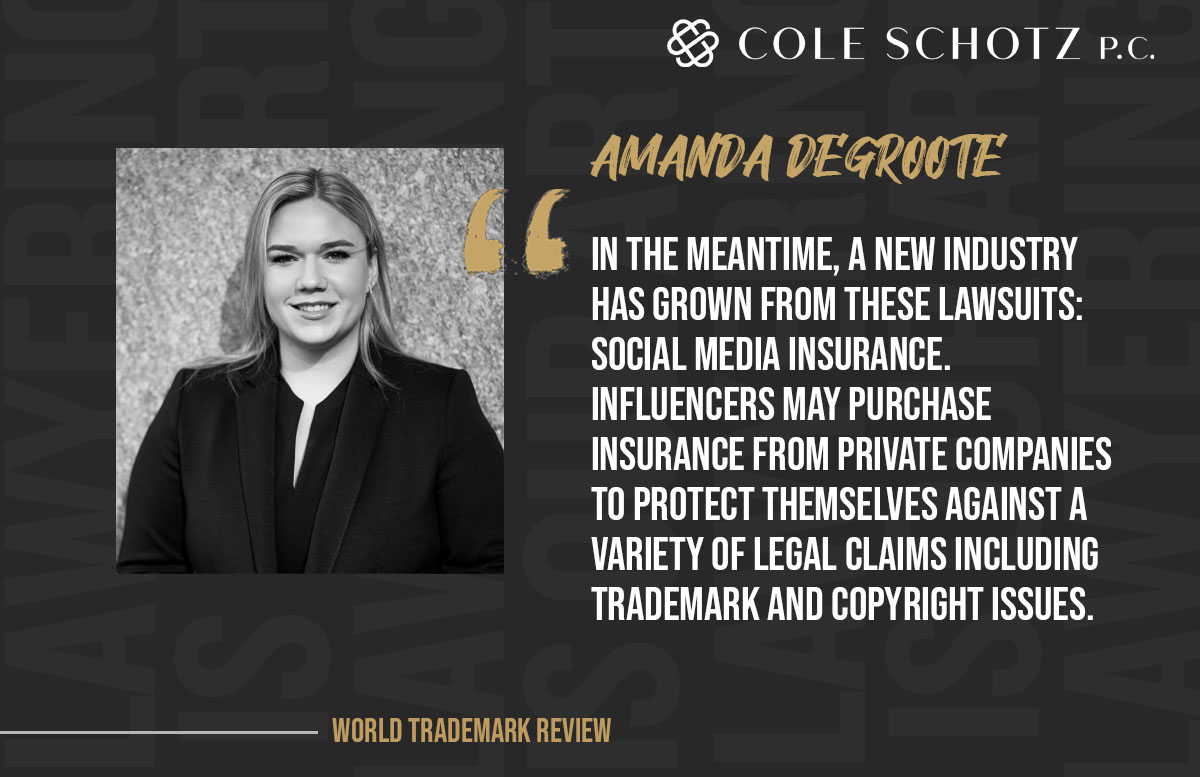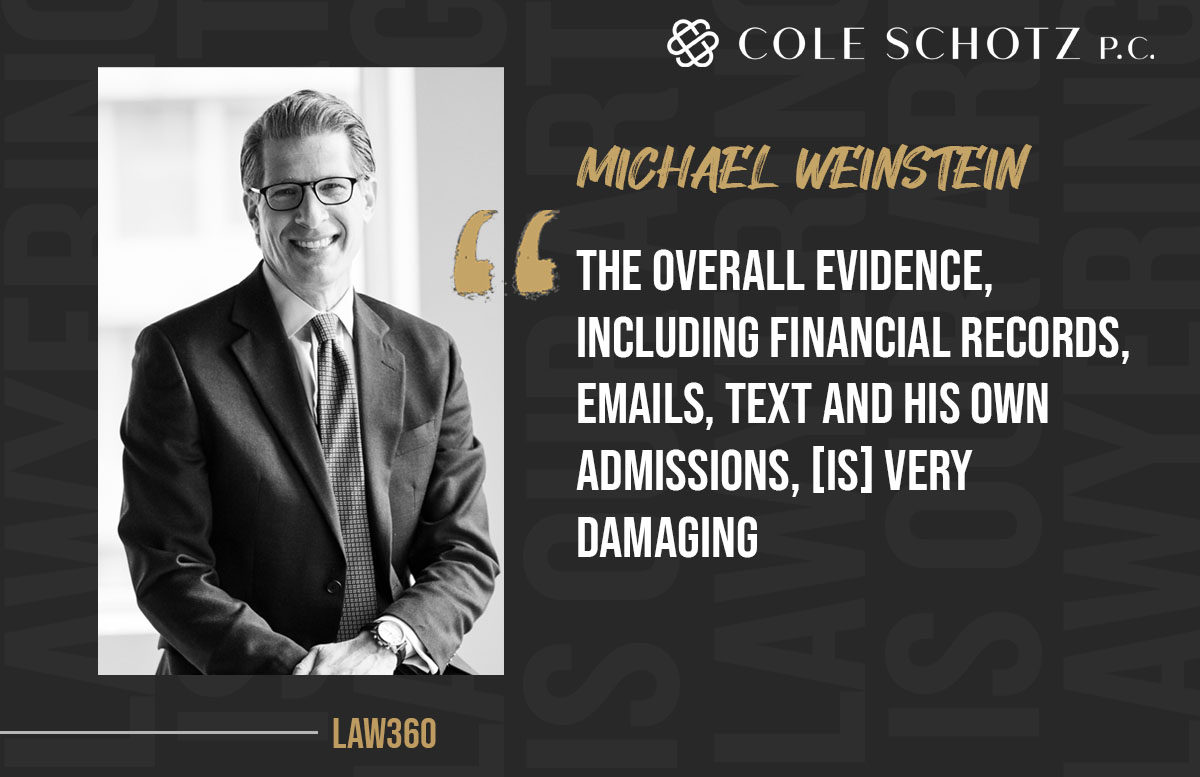Impact of Tweets, Followers and Likes on Valuations of Closely Held Companies
Reprinted with permission from the March 20, 2017 edition of the New Jersey Law Journal © 2016 ALM Media Properties, LLC. All rights reserved. Further duplication without permission is prohibited. ALMReprints.com – 877-257-3382 – reprints@alm.com.
A practical guide for litigation counsel
Imagine this common litigation fact pattern. A client owns 25 percent of a closely held business, embroiled in a heated oppressed minority shareholder dispute. The client’s minority stake likely will be purchased by the majority at the conclusion of the case. The hotly contested issue, therefore, concerns valuation, resulting in a classic battle of the experts.
The opposing party’s expert report lands on counsel’s desk, which—not surprisingly—opines the client’s ownership interest is worth far less than anticipated and includes numerous discounts, which further dwindle the corporation’s value (and the client’s interest) for buyout purposes. As a technologically savvy lawyer, the litigator notices the report fails to attribute any value to the company’s modern intangible assets, such as its impressive social media presence and dedicated followers, high volume of website traffic, successful internet branding campaigns, and search engine optimization—areas that the client built and cultivated over recent years to transform a successful local business into a national household name. How can counsel exploit these oversights to undermine the expert’s valuation, showing it to be incomplete and unreliable?
The answer lies in arming the litigator with ammunition to argue that the “internet of things” must be considered in determining a business’s “fair value” in the information age. This article provides practical guidance for counsel to consider when countering a business valuation that fails to attribute value to emerging technologies that a business has successfully harnessed, as well as its proven ability to innovate and reach new customers.
Step One: Identify the Evidence
Litigators must first identify the sources of potential evidence that would support this argument. Social media usually encompasses shared or interactive internet-based content, including text, graphics, video and audio accessible through a vast variety of platforms such as Facebook, Twitter, LinkedIn, YouTube, Instagram and similar platforms. Some platforms collect analytics such as the number of new followers added to an account each month, the total “clicks,” “likes,” “re-tweets,” “shares” or re-postings of content within a particular timeframe, the volume of online purchases flowing from social media links or posts (i.e., the conversion rate), website “hit count” reports, and Google optimized search results for the business’s niche/industry.
Considering this plethora of information sources, counsel should not restrict potential evidence repositories to paper documents, company email and conventional business records stored on the company’s network. Instead, an e-savvy brainstorming session along with online intelligence gathering may yield a treasure trove of publicly available or third-party hosted content that demonstrates the business’s online and social media presence, as well as the value generated by the company from these investments.
Step Two: Preserve and Collect the Evidence
Once counsel identifies the potential evidence, the next step will be to preserve and collect the information that the expert opinion failed to fully consider.
Business data residing on social media platforms is subject to the same duty to preserve as other types of electronically stored information. If the adversary controls the business’s social media accounts, it is critical to issue a detailed, and targeted “legal hold” notice that is specific and tailored to the particular platform the business uses to establish its internet presence. For instance, Facebook offers a “Download Your Info” option, which permits the user to download a zip file containing timeline information, posts, messages and photos. Twitter similarly offers an “archive” option and provides a method to obtain non-public information, such as IP logs that contain the address of the computer used to post a comment. If your client controls the business’s social media accounts, counsel should oversee the data collection for use by your client’s expert in formulating its opinion, report, and ultimately testimony at trial.
Counsel should not be tempted to rely on “screenshots” or static printouts of websites or social media accounts, as these are often incomplete, and should instead consider capturing this critical data through webpage preservation/archival software that reliably and inexpensively preserves electronic content for use in litigation. One commonly available program even generates forensically sound “web captures” in an easily readable format, along with pertinent metadata information for the website, such as its URL, the site’s IP address, the browser system utilized to access the content, and the time-stamp for the captured webpage. In addition, counsel should periodically update these archives as the content changes throughout the case.
If a third party maintains “custody and control” over records, counsel must request the records in a sound and review-friendly format through discovery and third-party subpoenas. Before issuing subpoenas to content hosts, counsel should be mindful of each platform’s user agreement and terms of service to determine what information the host retains and for what time period, how the information can be obtained, and the format in which it will be produced.
Step Three: Measure the Value
Many modern businesses understand the impact social media can have on the bottom line. Facebook profiles, LinkedIn postings, “tweets,” and other social media outlets can drive sales, increase brand awareness and loyalty, as well as build a company’s reputation. Measuring this value is another question, however, requiring expert opinion and analysis.
While there appears to be no “hard and fast” rule for how to attribute specific dollars to these intangible assets and the goodwill generated to the company as a result, there are a few commonly accepted valuation approaches that equally apply to measuring the value of a company’s social media and online presence.
For example, under the “income approach,” an expert values intangible assets based on the expectation of future economic income generated from that particular asset. In the social media context, this may equate to the increased revenue achieved by the company from specific postings, tweets or shares over a particular span of time. The “market approach” attributes value based on comparable transactions executed between other similar parties. Under this approach, an expert may utilize industry standards or estimates of social media value in comparable sales transactions to assess the particular monetary worth attributed to that asset in the industry. The “cost approach” values assets based on the amount of money required to replace the service capability of that asset. Here, that would mean the cost of hiring a social media consultant or employee to recreate the social media presence already established by the company.
Alternatively, the expert could exploit anecdotal evidence to glean the monetary value of social media presence to a particular business, relying on real world experiences to illustrate the value attributed to these intangible assets.
Step Four: Probe Social Media Value During the Expert’s Deposition
With an understanding of the business’s social media and internet presence, counsel will be prepared to attack an expert opinion that overlooks or minimizes these assets, as well as confront the expert with specific data undermining the completeness of the valuation. During a deposition, counsel should consider probing the following areas:
- Did the expert review the produced data relating to the company’s social media presence, online brand recognition and loyalty, or website patronage?
- Did the expert consider whether such resources impacted the value of the company?
- Was any specific adjustment made to the company’s valuation as a result?
- What methodology did the expert use to determine such assets should not be included in the company’s valuation?
- Where and how does the report specifically analyze that issue?
- Were any assumptions regarding the value of these resources integrated into the opinion or report?
- Did the expert consider how much it would cost the company to duplicate its social media presence through an outside vendor or by hiring an employee dedicated to that responsibility?
An e-savvy lawyer can exploit the value of a company’s social media presence to attack an expert report that fails to account for this potentially lucrative corporate asset, but only if counsel possesses an effective understanding of e-discovery best practices and considers how to leverage that knowledge to build the necessary, sound evidentiary support for such an argument.
As the law continues to evolve on these matters, please note that this article is current as of date and time of publication and may not reflect subsequent developments. The content and interpretation of the issues addressed herein is subject to change. Cole Schotz P.C. disclaims any and all liability with respect to actions taken or not taken based on any or all of the contents of this publication to the fullest extent permitted by law. This is for general informational purposes and does not constitute legal advice or create an attorney-client relationship. Do not act or refrain from acting upon the information contained in this publication without obtaining legal, financial and tax advice. For further information, please do not hesitate to reach out to your firm contact or to any of the attorneys listed in this publication.
Join Our Mailing List
Stay up to date with the latest insights, events, and more






